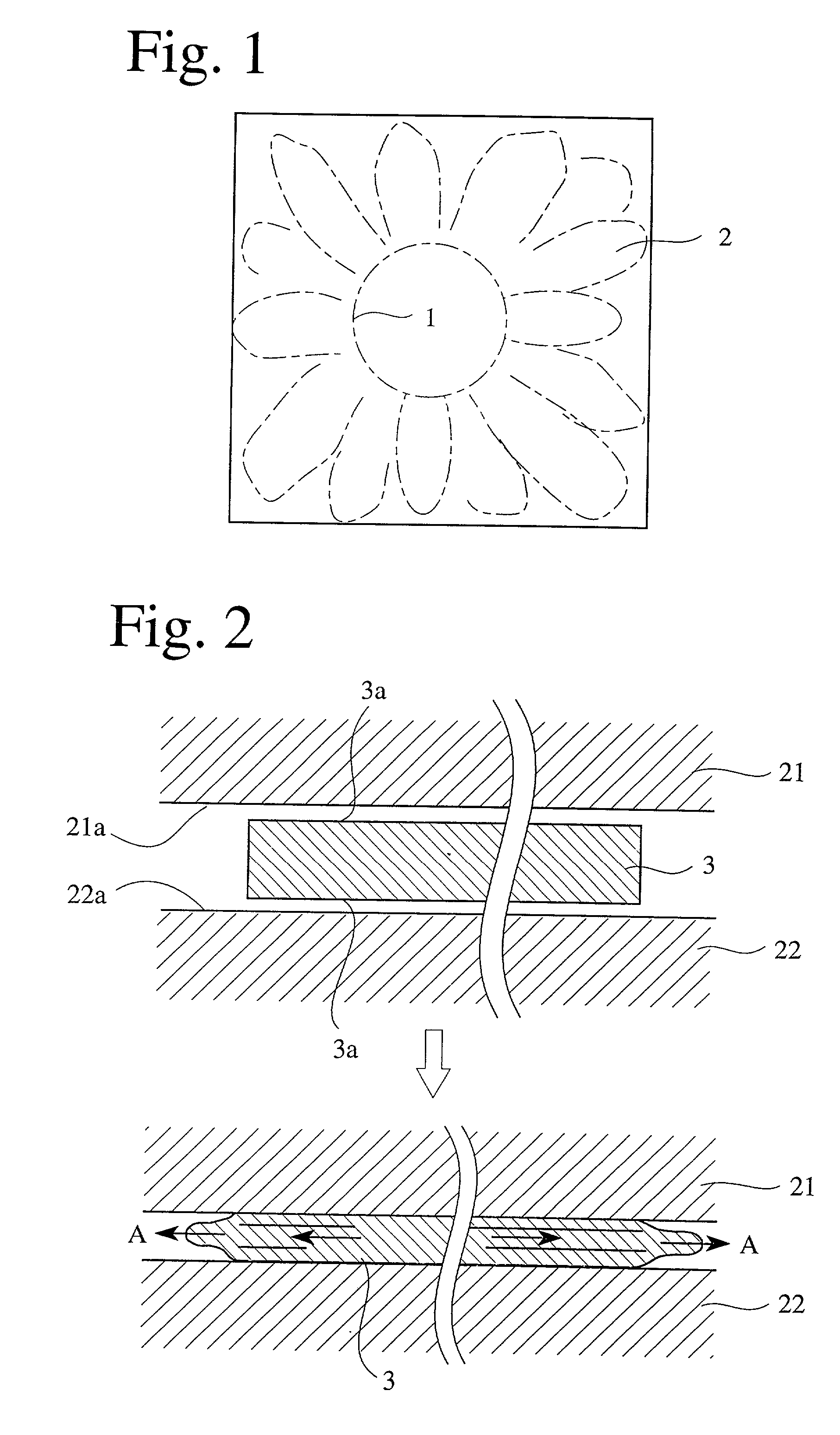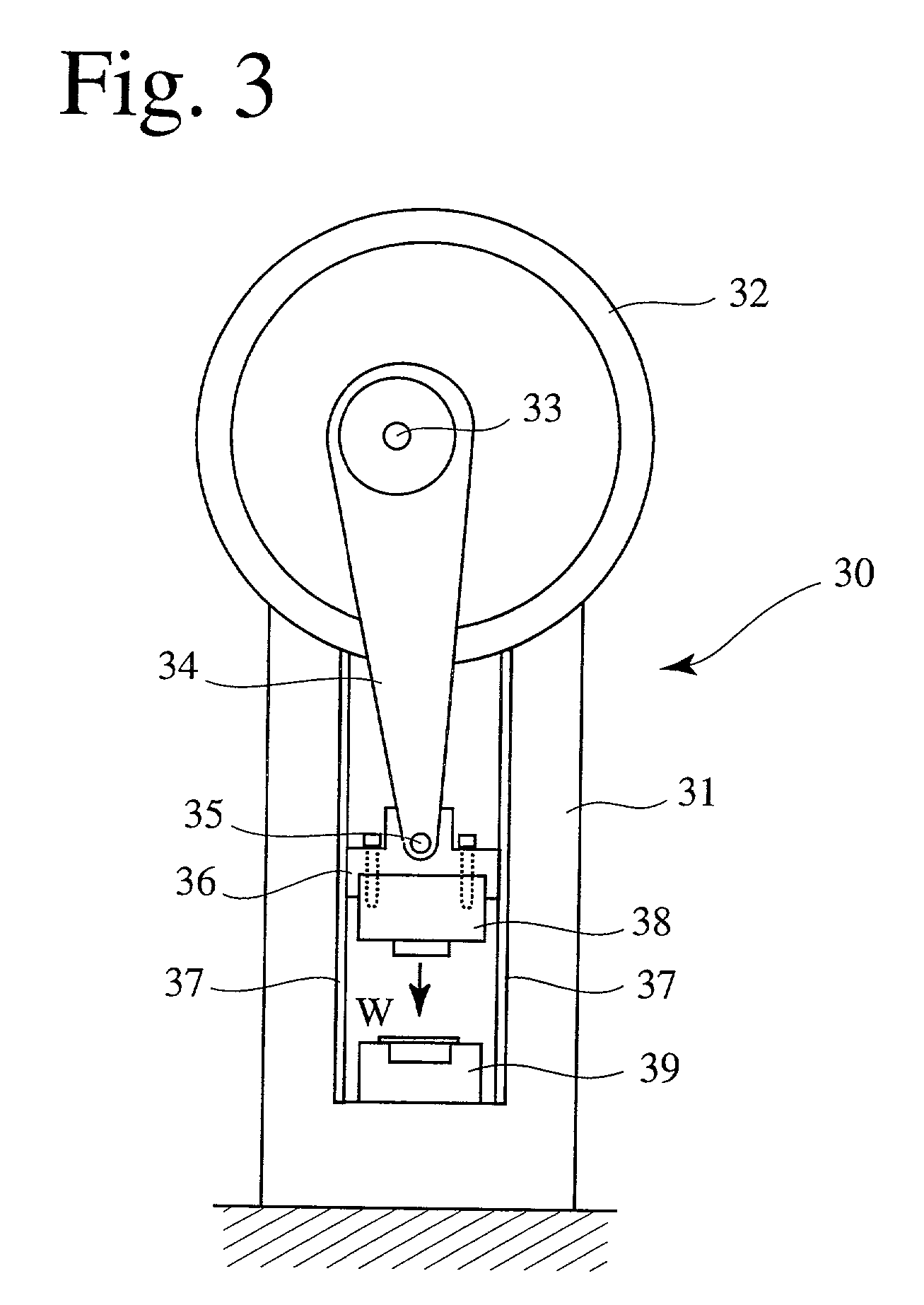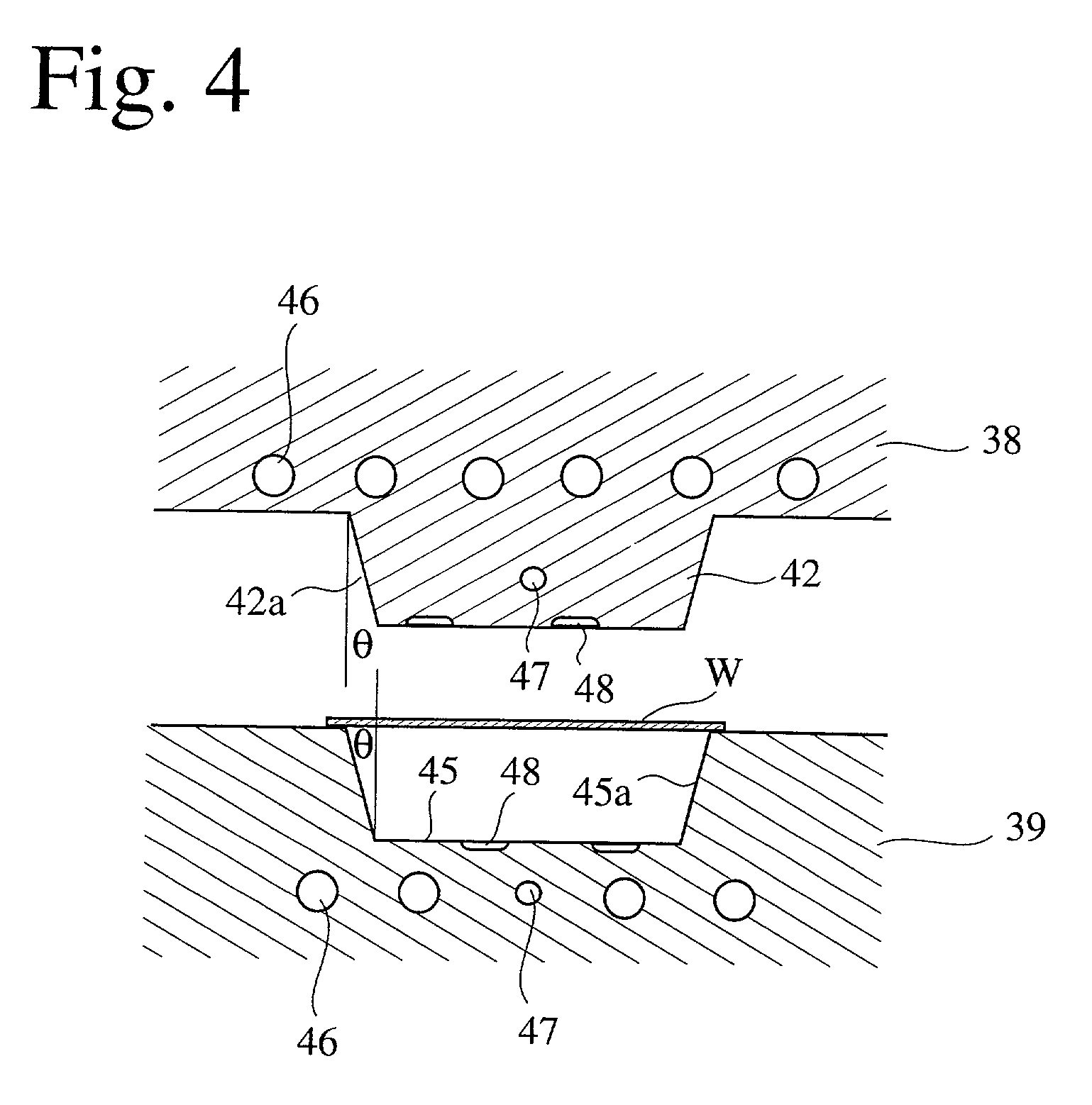Thin, forged magnesium alloy casing and method for producing same
a magnesium alloy and casing technology, applied in the field of thin, thin, forged magnesium alloy casings, can solve the problems of difficult to cast magnesium alloys into thin products, poor plastic working of magnesium alloys, and limited magnesium alloy castings to relatively thick products
- Summary
- Abstract
- Description
- Claims
- Application Information
AI Technical Summary
Benefits of technology
Problems solved by technology
Method used
Image
Examples
example 1
[0091] Ten round magnesium alloy rods (AZ31) of 30-40 mm in diameter and 10-40 mm in length were preheated at 500.degree. C. and placed in a first forging die shown in FIG. 4, which were coated with a graphite lubricant and heated at 400.degree. C. The first forging step was carried out under the conditions of a compression speed of 200 mm / sec. and a compression pressure of 20 tons / cm.sup.2 to form intermediate forged products having a thickness of 0.8-1.0 mm in a flat, thin plate area.
[0092] Next, each intermediate forged product was heated at 400.degree. C. and subjected to a second forging step under the conditions of a die temperature of 350.degree. C., a compression speed of 50 mm / sec. and a compression pressure of 10 tons / cm.sup.2 to form a box-shaped, thin forged casing. After trimming sidewalls, removal of the lubricant and polishing were carried out. The resultant thin forged casing had a size as follows:
[0093] Bottom: 80 mm.times.80 mm,
[0094] Sidewall: 5 mm (height),
[0095]...
example 2
[0103] This EXAMPLE used a first forging die consisting of a lower die block having a cavity whose inner bottom edges had a radius of curvature of 0.6 mm and an upper die block having a punch portion whose shoulder had a radius of curvature of 2.5 mm, and a second forging die consisting of a lower die block having a cavity whose inner bottom edges had a radius of curvature of 0.6 mm, and an upper die block having a punch portion whose shoulder had a radius of curvature of 0.7 mm.
[0104] A thin, flat magnesium alloy plate (AZ31) of 100 mm.times.100 mm.times.1.0 mm, which had lines 110 in a checkerboard pattern as shown in FIG. 11, was uniformly preheated at 450.degree. C. in an electric furnace filled with an argon gas and placed in a first forging die heated at 400.degree. C. The first forging step was carried out for rough forging under the conditions of a compression speed of 200 mm / sec., a compression pressure of 10 tons / cm.sup.2 and a compression ratio of 30%. The resultant box-s...
example 3
[0111] This EXAMPLE used a first forging die consisting of a lower die block having a cavity whose inner bottom edges had a radius of curvature of 0.8 mm and an upper die block having a punch portion whose shoulder had a radius of curvature of 3.5 mm.
[0112] A thin, flat magnesium alloy plate (Az31) of 55 mm.times.160 mm.times.1.5 mm was uniformly preheated at a temperature ranging from 200.degree. C. to 550.degree. C. in an electric furnace filled with an argon gas and placed in a first forging die heated at 400.degree. C. The first forging step was carried out for rough forging under the conditions of a compression speed of 200 mm / sec., a compression pressure of 10 tons / cm.sup.2 and a compression ratio of 20 %.
[0113] At preheating temperatures of the magnesium alloy plates between 350.degree. C. and 500.degree. C., box-shaped, intermediate forged products each having a bottom of 50 mm.times.155 mm, sidewalls of 6 mm in effective height, and a thickness of 1.2 mm in a flat plate por...
PUM
| Property | Measurement | Unit |
|---|---|---|
| compression ratio | aaaaa | aaaaa |
| thickness | aaaaa | aaaaa |
| compression ratio | aaaaa | aaaaa |
Abstract
Description
Claims
Application Information
 Login to View More
Login to View More - R&D
- Intellectual Property
- Life Sciences
- Materials
- Tech Scout
- Unparalleled Data Quality
- Higher Quality Content
- 60% Fewer Hallucinations
Browse by: Latest US Patents, China's latest patents, Technical Efficacy Thesaurus, Application Domain, Technology Topic, Popular Technical Reports.
© 2025 PatSnap. All rights reserved.Legal|Privacy policy|Modern Slavery Act Transparency Statement|Sitemap|About US| Contact US: help@patsnap.com



